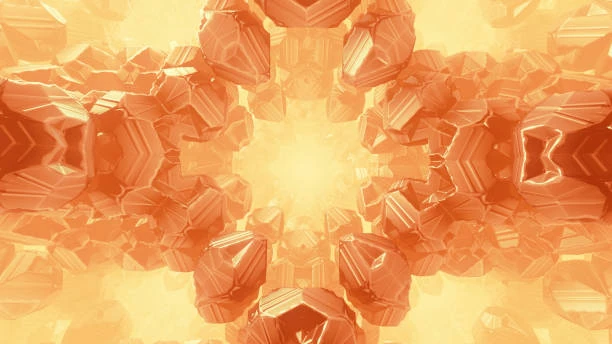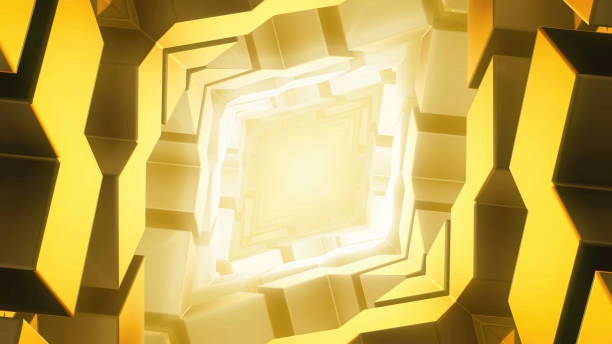In Hindu and Buddhist faiths, a Mandalas are geometric design, usually circular, that represents the universe. The Sanskrit word “mandala” means “circle,” and these patterns are used to symbolize the interconnection of all things and to aid in meditation and spiritual ceremonies.

Examples Of Mandalas
Example 1: Tibetan Sand Mandalas
Tibetan Sand Mandalas: As a kind of meditation and spiritual exercise, Tibetan monks use colored sand to build elaborate mandalas. These carefully crafted mandalas are frequently destroyed after they are finished, signifying the transience of existence.
Example 2: Navajo Sand paintings
Sandpaintings are made by the Navajo people of North America and are utilized in ceremonial healing. These colorful sand paintings, which commonly take the shape of mandalas and symbolize the universe’s peaceful balance, are created with colored sand.
Types of Mandalas
People have been enthralled with mandalas for millennia due to their intricate and captivating design and symbolic meaning.
These geometric or circular designs have great spiritual and cultural importance in addition to being beautiful artworks. Let’s examine the different kinds of mandalas and what distinguishes them from one another.
Healing Mandalas
These mandalas are made to encourage calmness and healing. Moreover, they frequently have calming patterns and colors that are intended to relax the body and mind.
Furthermore, healing mandalas are frequently used in therapy or meditation to lower stress and enhance general wellbeing.

Mandala of the Five Buddhas
Buddhism holds that every one of the Five Buddhas stands for a distinct facet of enlightenment. Each of the five Buddhas has a designated place within the Mandala of the Five Buddhas, which serves as a symbolic representation of these elements.
Additionally, to develop these attributes within oneself, this kind of mandala is utilized in ritualistic meditation sessions.
Sand Mandalas
These elaborate, transient works of art are made from colored sand. In addition, tibetan monks frequently laboriously create them as a kind of meditation. In a ritual, the finished mandala is destroyed to represent the transience of existence.
Yantra Mandalas
Hinduism uses geometric patterns called yantras as tools for meditation and worship. Moreover, extensive renditions of these patterns, yantra mandalas frequently have intricate patterns and symbols.
They are employed in rituals to call upon deities or focus the mind during meditation because they are thought to possess magical and spiritual abilities.
Nature Mandalas
Materials from the natural world, like leaves, stones, and flowers, are used to construct these mandalas. They are intended to honor the harmony and beauty of nature, but they are frequently ephemeral.
Making nature mandalas may be a peaceful hobby that fosters a sense of connection between the artist and the natural world.

Mandala Symbolism
| Symbol | Meaning |
|---|---|
| Circle | Unity and wholeness |
| Center | Divine or cosmic source |
| Symmetry | Balance and harmony |
| Radiating lines | Energy and movement |
| Colors | Different colors can represent various emotions, elements, or chakras |
| Shapes | Geometric shapes can symbolize different aspects of the universe or spiritual concepts |
| Lotus flower | Purity and enlightenment |
| Four gates | The four cardinal directions or stages of life (birth, life, death, rebirth) |
| Circles within circles | The endless cycle of life and death |
| Mandalas within mandalas | The interconnectedness of all things |
| Squares and triangles | Representing the physical world (square) and the spiritual world (triangle) |
| The number eight | Represents cosmic order and balance |
| The number four | Represents the four elements (earth, air, fire, water) or the four directions |
History and Meaning Behind Mandalas
The history of mandalas, those evocative and complex circular patterns, is as colorful and rich as their patterns. Furthermore, these hallowed images have a long history and are ingrained in many different cultures and customs.
In addition, let’s explore the intriguing tales that underlie mandalas as we go through their history.

Ancient Origins
It is said that the idea of mandalas came from ancient India, where they were employed as spiritual symbols in Buddhism and Hinduism. Furthermore, the Sanskrit term “mandala” means “circle,” signifying the cosmos and its cosmic order.
Buddhist Influence
Mandalas are depictions of the enlightened mind and are utilized as meditation aids in Buddhism. Buddhist mandalas have elaborate designs that frequently include geometric patterns and symbols intended to lead the practitioner on a path to enlightenment.
Tibetan Tradition
Sand mandalas are intricate drawings formed from colored sand that are famously created by Tibetan monks.
The monks in this age-old art form create these elaborate patterns over the course of days or even weeks as a kind of meditation; when they are finished, they destroy them to represent the transience of existence.
Native American Mandalas
Native American tribes had a custom of drawing circular designs in the sand or on the ground, proving that mandalas are not just found in Eastern cultures.
In addition, these “medicine wheels” are thought to symbolize the interdependence of all living things and are utilized in spiritual ceremonies.
Modern Resurgence
Due to its beauty and spiritual significance, mandalas have seen a rise in popularity in recent years among people all over the world. Moreover, Mandala coloring books have gained popularity as a way to express one’s creativity and relieve stress.
Uses of Mandalas
Beyond only being exquisite pieces of art, mandalas have been utilized for generations due to their complex designs and vivid hues. Let’s examine the various applications for mandalas and the various ways they might enhance our life.
Spiritual Significance
andalas are revered images in Buddhism and Hinduism that symbolize the cosmos and the divine order. Additionally, they are employed in ritualistic activities and meditation to promote enlightenment and spiritual development.
Furthermore, it is thought that the complex designs of mandalas aid in mental concentration and spiritual connection.
Meditation and Mindfulness
Mandalas are frequently used as meditation objects, with practitioners concentrating on the pattern and hues to calm their minds and enter a meditative state.
Moreover, drawing mandalas has gained popularity as a meditation technique due of its relaxing and healing qualities.

Healing and Therapy
Self-expression and healing are achieved through the usage of mandalas in art therapy. In addition, Making or coloring mandalas can enhance emotional well-being and lessen stress, worry, and despair.
Making mandalas is supposed to be a therapeutic technique that enables people to creatively and safely explore their ideas and feelings.
Decorative Art
In many civilizations, mandalas are also employed as decorative art, adorning clothing, homes, and temples. They are used to adorn places and items because their complex and symmetrical designs are frequently seen as visually beautiful.
Cultural Traditions
Moreover, Mandalas have a significant role in religious and cultural traditions throughout a wide range of countries. In addition, they serve as a symbol of harmony, wholeness, and unification in ceremonies, rituals, and celebrations.
Conclusion
In conclusion, the mandala is not just a beautiful design; it is a powerful symbol with deep spiritual, cultural, and therapeutic significance. Whether used for meditation, healing, or decoration, mandalas continue to inspire and enrich our lives in meaningful ways.
FAQs
The symbolism of a mandala lies in its representation of the universe’s harmony and interconnectedness.
Different mandala patterns include circular, geometric, floral, and symmetrical designs.
The three primary components of mandalas are the center, the circle, and the symmetrical design.
Choose a mandala based on your personal preference, the intended use (e.g., meditation, decoration), and the symbolism of the design.
There are five main types of mandalas, including healing mandalas, the Mandala of the Five Buddhas, sand mandalas, yantra mandalas, and nature mandalas.
Related Posts:
Lorenzo De Medici In The Price | De Medici (Biography, Net Worth)
Eddie Cheng In Crazy Rich Asians | Character Analysis
11 Important Themes Of Pygmalion & Symbolism| By Bernard Shaw



